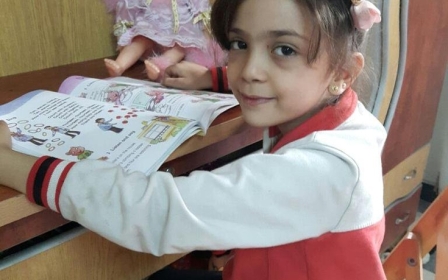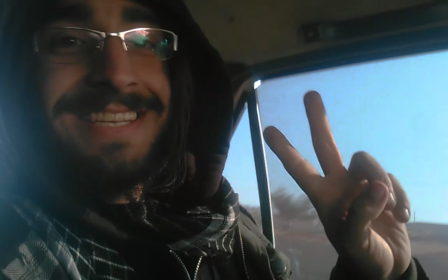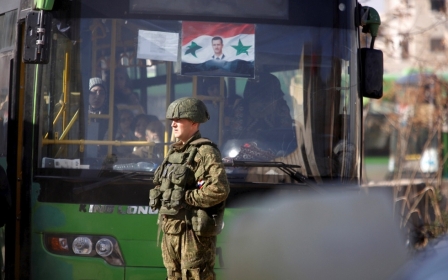East Aleppo evacuation resumes in Syria as snow hits

Buses loaded with Syrian civilians began leaving the last rebel-held enclave of eastern Aleppo again on Wednesday after being stalled for a day, a UN official said.
"Buses are now moving again from east Aleppo. We hope that this continues so that people can be safely evacuated," the UN official in Syria told Reuters by email at 2pm GMT.
At the same time, a military news service run by the Lebanese group Hezbollah, an ally of the Syrian government, said on Wednesday that obstacles hindering the evacuation of people from two Shia villages in Idlib province that had been besieged by rebels had been overcome.
Its report said that the evacuations would be completed in a few hours.
Evacuation stall connected to delays in Shia villages
Earlier on Wednesday, an AFP correspondent in the government-held neighbourhood of Ramussa - through which thousands of evacuees have passed in recent days - reported that no convoys had left the last pocket of opposition-controlled Aleppo.
Heavy snow blanketed the city, swirling through crumbled buildings and adding to the misery of thousands still inside the last part of what was once a crucial stronghold of Syrian rebel forces.
READ: Leading figures in Iran, Lebanon warn of Aleppo fallout
Workers in the red uniforms of the Syrian Arab Red Crescent, which has been helping with the evacuations, huddled by the side of the road, their white ambulances parked nearby barely visible in the snow.
A Syrian military source told AFP that delays in evacuations from Aleppo were "procedural" and connected with the need to "synchronise" operations in the two villages.
"More than 1,700 people are waiting to leave Fouah and Kefraya," the source said.
As part of the evacuation deal, some residents were being evacuated in parallel from Fouah and Kefraya, two Shia-majority villages in northwestern Syria besieged by rebels, who are mainly Sunni Muslims.Shia-dominated Iran - another key Assad ally - was reported to have insisted on the evacuations of Fouah and Kefraya for the Aleppo withdrawal to go ahead.
About 750 people have so far been able to depart from the villages, according to the International Committee of the Red Cross (ICRC).
Thousands remain
At least 25,000 people have left rebel districts of Aleppo since opposition fighters agreed last week to withdraw from the city after years of fighting, according to the ICRC, which is overseeing the operation.
The retreat from Aleppo - which had been divided into a rebel-held east and government-controlled west since 2012 - marks the biggest victory for President Bashar al-Assad's forces in nearly six years of civil war.
READ: Aleppo rebels say they'll 'leave 'wearing explosive belts'
It follows a month-long army offensive and weeks of siege that killed hundreds and left rebels with less than 10 percent of the territory they once controlled in the city.
Brokered by government ally Russia and opposition supporter Turkey, the evacuation plan has moved forward in fits and starts but appeared to be reaching its end.
On Tuesday soldiers used loudspeakers to warn remaining fighters and civilians it was time to leave eastern districts.
A military source told AFP the army was expected to enter the rebel enclave "to clean the area after the fighters leave".Ahmad al-Dbis, who heads a team of doctors and volunteers coordinating evacuations, said around 150 people had been able to leave at dawn on Wednesday in two buses and three ambulances.
But more were still waiting, with a convoy of 31 buses and about 100 other vehicles being prepared in rebel territory, Dbis said.
It was unclear how many civilians remained inside east Aleppo, though Dbis said there were "a few thousand" who were still hoping to leave.
Middle East Eye propose une couverture et une analyse indépendantes et incomparables du Moyen-Orient, de l’Afrique du Nord et d’autres régions du monde. Pour en savoir plus sur la reprise de ce contenu et les frais qui s’appliquent, veuillez remplir ce formulaire [en anglais]. Pour en savoir plus sur MEE, cliquez ici [en anglais].







